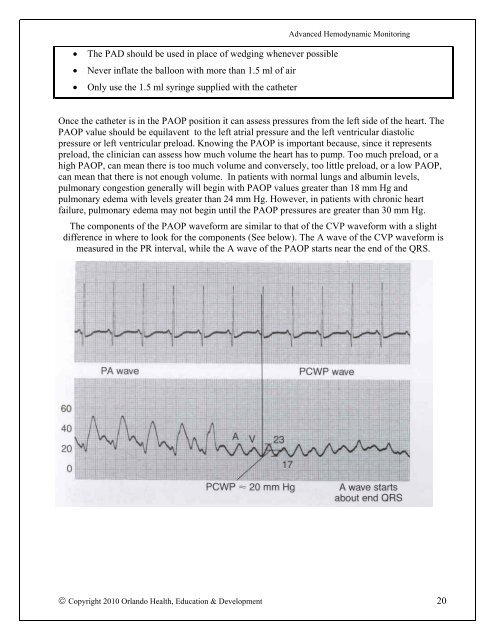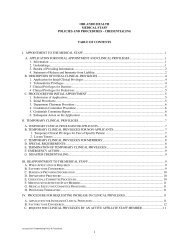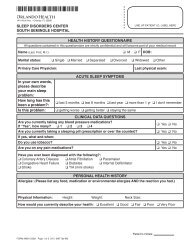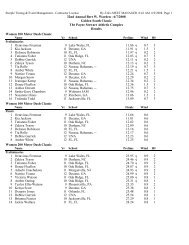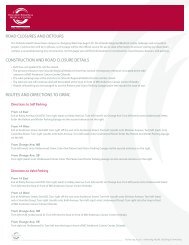Advanced Hemodynamics - Orlando Health
Advanced Hemodynamics - Orlando Health
Advanced Hemodynamics - Orlando Health
Create successful ePaper yourself
Turn your PDF publications into a flip-book with our unique Google optimized e-Paper software.
<strong>Advanced</strong> Hemodynamic Monitoring<br />
<br />
<br />
<br />
The PAD should be used in place of wedging whenever possible<br />
Never inflate the balloon with more than 1.5 ml of air<br />
Only use the 1.5 ml syringe supplied with the catheter<br />
Once the catheter is in the PAOP position it can assess pressures from the left side of the heart. The<br />
PAOP value should be equilavent to the left atrial pressure and the left ventricular diastolic<br />
pressure or left ventricular preload. Knowing the PAOP is important because, since it represents<br />
preload, the clinician can assess how much volume the heart has to pump. Too much preload, or a<br />
high PAOP, can mean there is too much volume and conversely, too little preload, or a low PAOP,<br />
can mean that there is not enough volume. In patients with normal lungs and albumin levels,<br />
pulmonary congestion generally will begin with PAOP values greater than 18 mm Hg and<br />
pulmonary edema with levels greater than 24 mm Hg. However, in patients with chronic heart<br />
failure, pulmonary edema may not begin until the PAOP pressures are greater than 30 mm Hg.<br />
The components of the PAOP waveform are similar to that of the CVP waveform with a slight<br />
difference in where to look for the components (See below). The A wave of the CVP waveform is<br />
measured in the PR interval, while the A wave of the PAOP starts near the end of the QRS.<br />
Copyright 2010 <strong>Orlando</strong> <strong>Health</strong>, Education & Development 20


